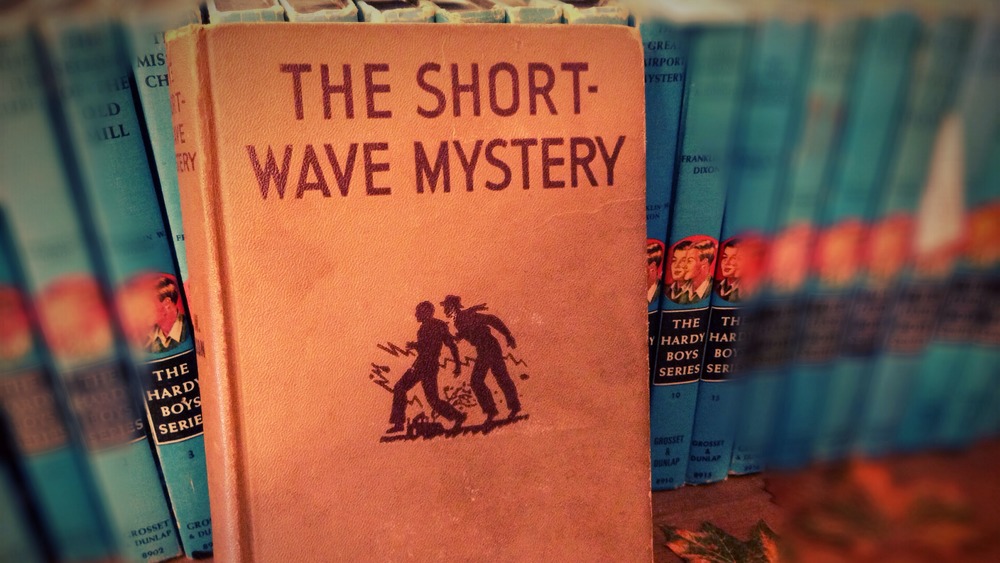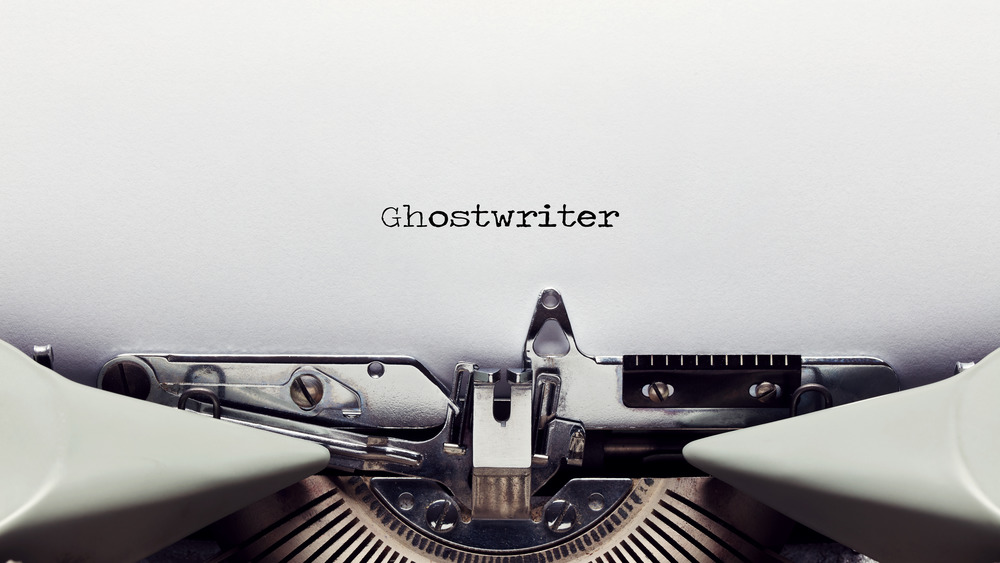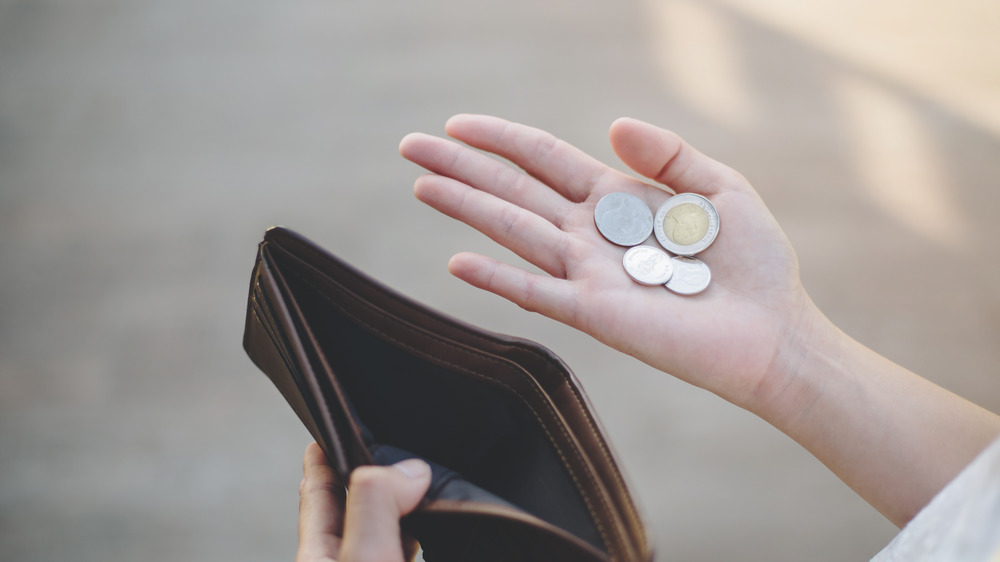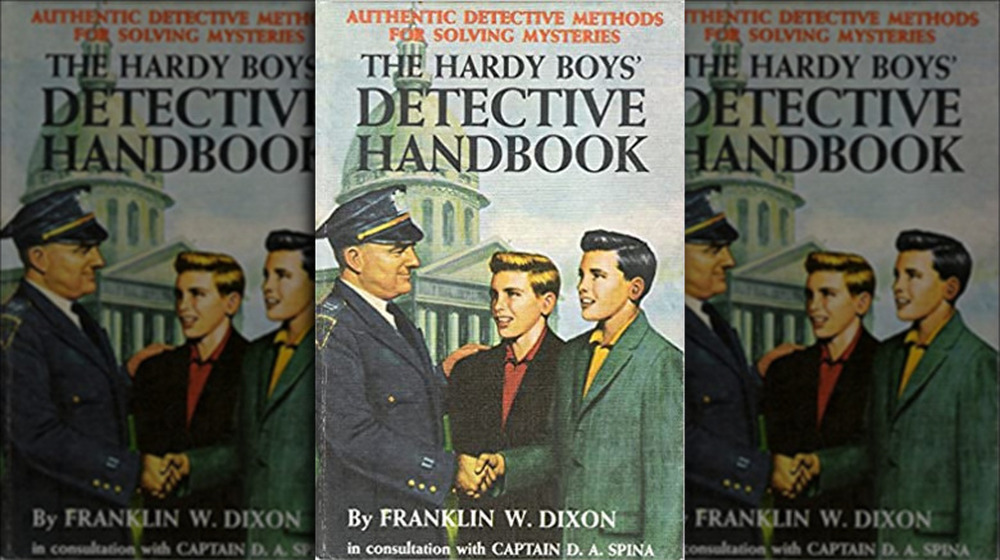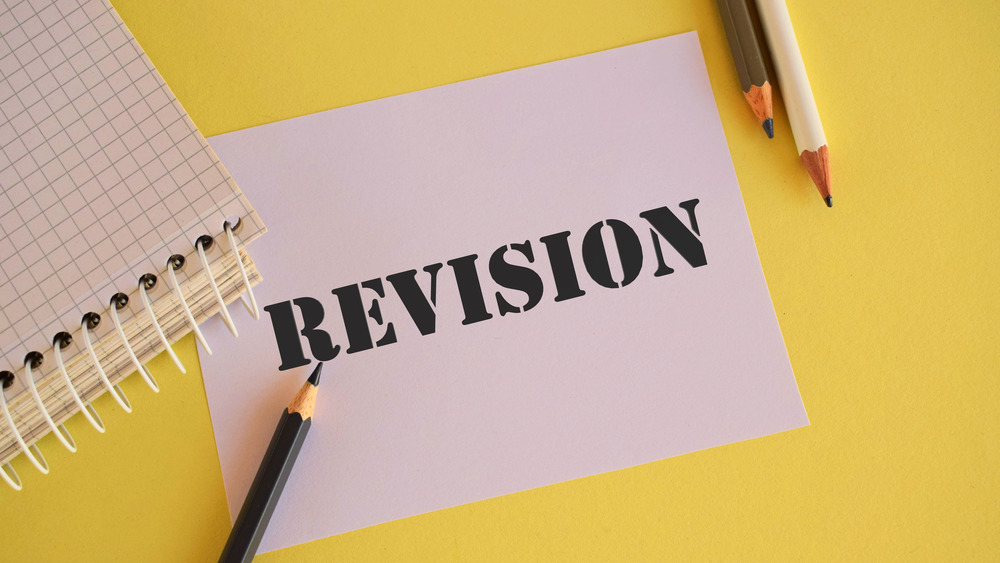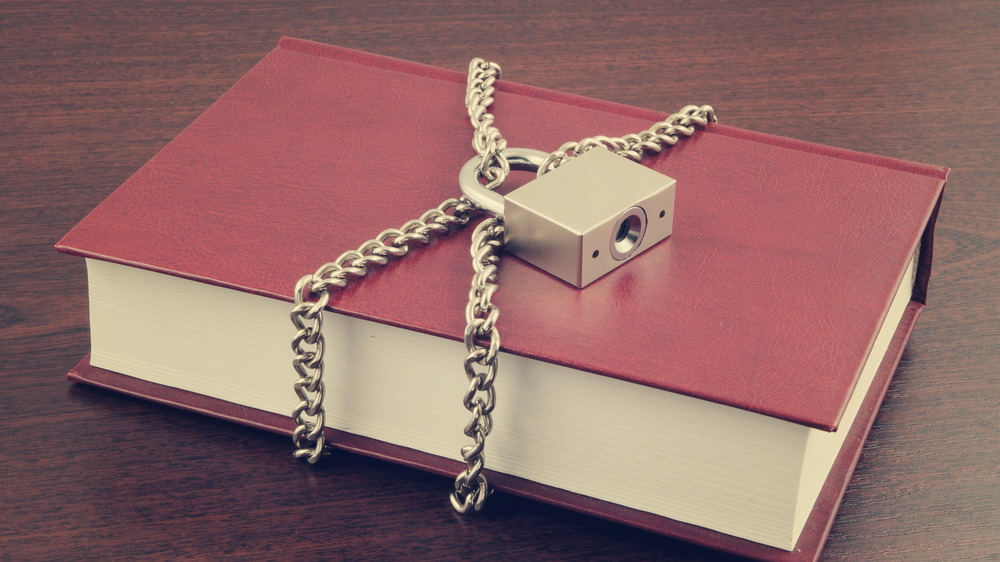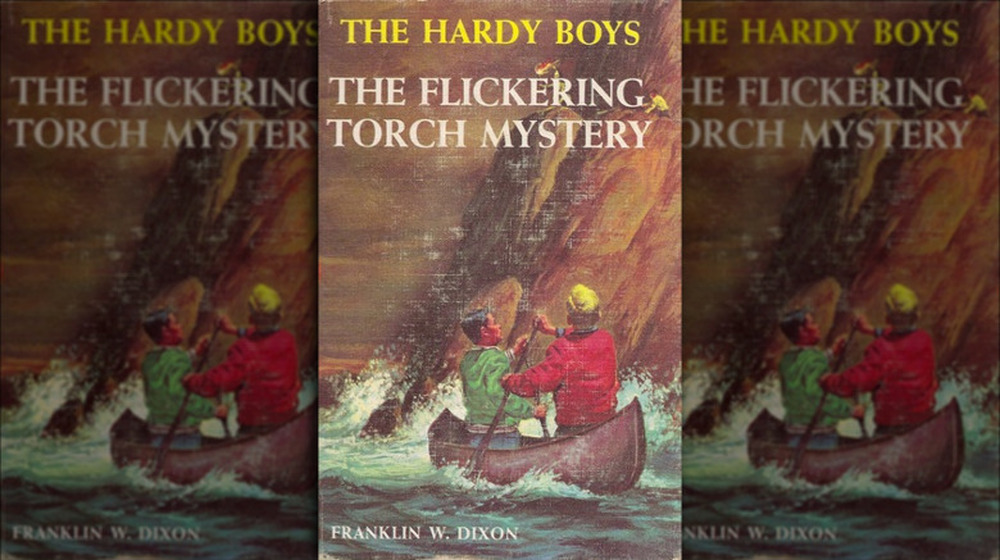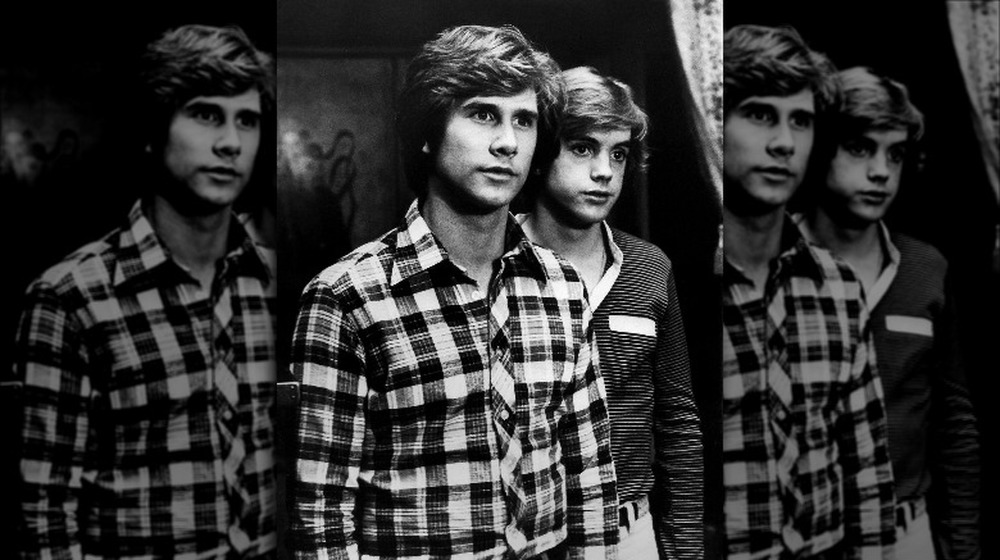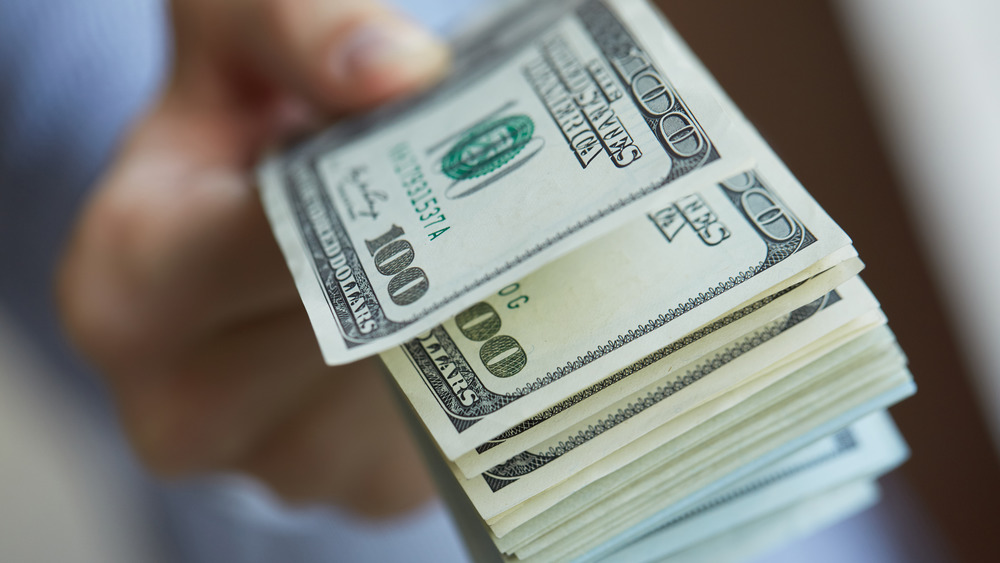The Untold Truth Of The Hardy Boys
The Hardy Boys are so embedded in our popular culture they're practically invisible, like air. For nearly a century, these wholesome boy detectives have been solving crimes in a franchise that has come to encompass books, television shows, comics, and even video games. The series is recognized all over the world, and every year a new generation of kids discover the simple pleasures of two kids having mysterious adventures.
But as wholesome as they seem, the Hardy Boys haven't gone without controversy. Almost from their debut, there's been more going on under the surface than you might think. From an innovative business model some describe as exploitative to a constant battle to keep the series current without sacrificing its essential literary DNA, the Hardy Boys have been through a never-ending cycle of evolution and reinvention.
At the same time, part of the untold truth of the Hardy Boys is the often overlooked impact the books have had on children's literature and the ongoing debate concerning their overall literary value. When you look at the Hardy Boys as a brand, you might see innocence and simplicity in book form, but there's a lot more going on if you dig under the surface.
The Hardy Boys were revolutionary
It's easy to make gentle fun of the Hardy Boys books. They're formulaic, with each story going through very similar plot points in very familiar ways. They weren't always written particularly well (though that was more of a problem for the earliest books). And they were intentionally wholesome, at least in the broad strokes. You know you can let your kids read them without worrying about references to anything too "adult."
But like everything, it's important to put the books in context, because the Hardy Boys were kind of low-key revolutionary in the world of children's books. Prior to the Hardy Boys, children's literature was dominated by supposedly "instructional" stories under the belief that young minds had to be shaped. As noted by High Plains Public Radio, the mastermind behind the Hardy Boys, Edward Stratemeyer, saw a rising interest in crime and realized that kids wanted to read the same exciting stories as adults.
The Hardy Boys were conceived as pure entertainment for kids — no educational value necessary. More importantly, they were conceived as entertainment for boys. As The New York Times notes, boys don't read as much as girls, and the reason may lie in the types of books that teachers and librarians — still largely female even in the modern age — recommend to them. The Hardy Boys offered boys stories with adventure, crime, and a sense of real danger. Their success changed how literature was marketed to kids.
Hardy Boys books are all ghostwritten, and always have been
Author Franklin W. Dixon has been publishing Hardy Boys books since 1927, which would make him a very, very old man today — if he existed.
But as noted in The Atlantic, he doesn't and never did. The Hardy Boys were the brainchild of Edward Stratemeyer, who created the Stratemeyer Syndicate in 1905. His great innovation in the field of publishing was to hire a network of freelance writers who wrote novels for a small flat fee. Stratemeyer would come up with basic concepts, get a team of writers together, then enjoy all the profits once the books published.
That means there have been a lot of different writers pumping out Hardy Boys books over the years, resulting in some pretty wild and obvious fluctuations in style and quality. None of them had any rights to the characters or the books — they were all brought in to do "work for hire," and they all understood they would get no credit or compensation beyond their fee, which was just $85 per book when the series launched in 1927.
Stratemeyer's idea was way ahead of its time. While work for hire "content" is common in today's Internet world, in 1905 it was a radical idea —and one that's still fooling people who think Dixon is a real person to this day.
Hardy Boys writers got paid really, really badly
Writing isn't exactly the best-paying career. Sure, there are people like Stephen King and J.K. Rowling who rake in the dough — but they're definitely the exceptions. Unfortunately, the ghostwriters who wrote the Hardy Boys books are among the many writers who didn't get paid particularly well for their work.
Ghostwriters were paid $85 per book when the series launched in 1927. That would be close to $1,300 in today's money — not too bad, but considering the many millions of copies the books eventually sold, not even close to being fair. According to The Atlantic, the pay got a little better over time, and in the 1980s some ghostwriters were making $5,000 per book (which would be about $15,000 today). That's not bad for cranking out a short kids' book — but when you consider the sales these books generated, it starts to look much worse.
As Salon points out, the first Hardy Boys book, The Tower Treasure, has sold more than 70 million copies since its publication. The ghostwriter, Leslie McFarlane, earned about $4,000 total. If he'd been given a standard royalties agreement, he would have been a millionaire. McFarlane never complained, though — he told an interviewer, "I was not swindled. I accepted the terms of Edward Stratemeyer, and the importance of the money was related to my needs."
The Hardy Boys were edgier in the beginning
When you think of the Hardy Boys, you probably think about a pair of wholesome kids who spend all their time catching criminals and making the world a little bit safer. That's part of the appeal, of course — the fantasy that you could literally stumble onto adventure at any moment and then be a hero.
The Hardy Boys are wholesome — but they're actually more wholesome today than they were originally. In fact, in their initial incarnation, there were actually a lot of problems with the Hardy Boys. As noted by The Atlantic, the first wave of Hardy Boys books were incredibly and casually racist, with people of color typically referred to as "natives" and usually depicted as criminals. There weren't many Black characters in the stories, but when they did appear, they usually spoke in a stereotypical "pidgin." A representative quote: "Ah pays mah fare, an' Ah puts mah shoes where Ah please."
More subtle was the anti-authoritarian aspects of the Hardy Boys. In the early books, the police are almost always depicted as incompetent and unreliable, at best. The clear message of these early adventures is that adults can't be trusted, and kids are better off following their own instincts. When parents began to notice these themes, they complained, worried that their kids were being radicalized by seemingly innocent mystery novels.
There was controversy in the 1950s
The early Hardy Boys books are chock full of problematic stuff, from relatively explicit racism to a skepticism of authority that was considered unseemly for young kids to be emulating. No one complained in the 1930s and 1940s, but by the 1950s, the country was beginning to gently address its problems with race, and parents began to worry about their kids growing up to be hooligans — or, worse, communists. And the Hardy Boys ran into some trouble.
As noted by Tablet Magazine, the Hardy Boys books (and their sister series, Nancy Drew) were filled with numerous examples of racist language that depicted Blacks, Indigenous Americans, and Jews in less-than-flattering ways. As noted by author Melanie Rehak, as the attitudes of the country changed, the Hardy Boys' publisher, Grosset & Dunlap, began receiving letters fiercely critical of the racial attitudes found in the Hardy Boys books.
One of the biggest obstacles to changing the tone and language of the books was Edward Stratemeyer's daughter, Harriet Adams. Adams had become one of the principle ghostwriters for the series and jealously guarded her father's legacy. Adams didn't dismiss these new concerns out of hand, but she was blind to what Rehak terms her own "soft racism." Adams defended the language in the early books as necessary for character and plot and didn't believe any of it was harmful to anyone.
The publisher had to revise all the early Hardy Boys books
The Hardy Boys were initially conceived in the mid-1920s and made their debut in 1927. By the mid-1950s, the country that had embraced the characters no longer existed — a depression, a world war, and a burgeoning civil rights movement had irrevocably changed it. Author Melanie Rehak writes that the publishers began receiving increasingly angry letters from parents upset at the racial stereotypes they found in the Hardy Boys, and when sales began to suffer as a result, the decision was made to revise the early books. All of them.
The Atlantic notes that the Stratemeyer Syndicate launched a 14-year project to rewrite the first wave of books in order to remove racist language — often accomplished by simply removing characters of color altogether — as well as old-fashioned slang that dated the books. As a result, the modern printings of those classic Hardy Boys books are very different from the originals. Salon points out that the revised versions were often shorter than the originals and excised not just the objectionable stuff but many of the character details that made those books fun.
The original books remained in people's consciousness, however, and people continued to seek them out and avoid the revised versions. In fact, as the Los Angeles Times reports, a company began reprinting the originals in the 1990s in order to satisfy demand for these non-sanitized versions, complete with their charming, old-timey racism.
The Hardy Boys books are actually frequently banned
You might imagine that Hardy Boys books are pretty mainstream and not at all controversial. But you couldn't be more wrong. The Hardy Boys books are extremely controversial — in certain places.
Those places would be anywhere that young minds are shaped. Libraries, for example, have fought a long battle against the Hardy Boys books (and other properties published by the Stratemeyer Syndicate, like the Nancy Drew books). As noted by the University of Maryland University Libraries, this battle isn't rooted in censorship but rather a disdain for the quality of the books themselves, which most librarians simply regard as inferior due to the "assembly line" manner in which they were produced. Many educators and librarians believe that there's nothing wrong with adventure stories or mysteries, but letting kids read the Hardy Boys and similar books ruins their ability to recognize good writing over bad.
It's not just snooty librarians, either. As noted by the Los Angeles Times, before the early Hardy Boys were heavily revised in the 1950s, expunging a lot of racist and otherwise problematic references and characterizations, the Boy Scouts of America actually banned the books, forbidding their members to read them. The books were deemed to not be in line with the Boy Scouts' values.
The ghostwriters knew the books were bad
Leslie McFarlane was one of the first and most prolific of the writers working for the Stratemeyer Syndicate producing Hardy Boys books. Between 1927 and 1947, McFarlane wrote 22 books in the series, all published under the name Franklin W. Dixon. Although these early books were heavily revised in the 1950s and 1960s due to content that was deemed racist and/or old-fashioned, many fans of the series still revere McFarlane's original books.
McFarlane himself did not. As reported by The Washington Post, his daughter Norah Perez says her father "hated the Hardy Boys." McFarlane kept a diary for most of his life, and his feelings about writing those Hardy Boys books are preserved for posterity in them. The diaries make it clear that McFarlane took the work out of desperation for money. He refers to the books derisively as "the juveniles" and describes them using words such as "ridiculous," "accursed," and "ghastly." When the Stratemeyer Syndicate wrote him a letter commanding him to keep his identity secret, he was relieved and considered writing back insisting they do the same.
McFarlane dreamed of a more respectable career writing fiction and always saw his Hardy Boys work as a way to pay the bills. He did publish eight novels of his own, and two autobiographies, though you'd be hard-pressed to find them in print these days.
The Hardy Boys were a 1970s phenomenon
The Hardy Boys debuted in 1927, which is close to a century ago. The last time they were a force in popular culture was much more recent —and yet still 40 years ago.
In 1977, The Hardy Boys/Nancy Drew Mysteries showed up on ABC television. The show itself was a minor hit, but as Oprah.com notes, one of its stars, Shaun Cassidy, became a breakout teen heartthrob with hit records on the radio and posters on the walls of just about every teen girl in the country. As the Chicago Tribune reports, Cassidy was already a star when he was cast in the role, with his songs "Da Do Ron Ron" and "That's Rock and Roll" shooting up the music charts.
Cassidy played Joe Hardy, Parker Stevenson played Frank Hardy, and Pamela Sue Anderson played Nancy Drew. The show ran for three seasons (the show dropped the Nancy Drew character in season three) and even got nominated for an Emmy. And for a brief moment the Hardy Boys were cool and popular.
As Geeky Camel notes, the show generated a tremendous amount of merchandising, thanks in part to Cassidy's fame outside the show. While Cassidy earned $15,000 a week for the show (not bad for 1977), he made a lot more from lending his face to Hardy Boys lunchboxes, watches, and posters.
The Hardy Boys books are collectibles
The Hardy Boys books are so ubiquitous and still continue to sell so well they seem common. But the fact is the early editions of the books are collectible items. While most of the collectors are motivated by nostalgia and their own memories of discovering the books, some copies have actually sold for serious money.
According to the Henderson Times-News, figuring out what a Hardy Boys book might be worth is a challenge, because the series has gone through so many variations and reinventions. Some of the early books can sell for $5 — not a lot, but not bad if you happen to stumble on a box of them in someone's attic. Some of the later books from before the 1950s can get as much as $10. But some of the earliest books can fetch hundreds of dollars each if they still have the dust jacket and it's in good condition. And one copy of a Hardy Boys book in absolutely mint condition sold for about $1,000.
The condition of the books is key. Because they were marketed to and read largely by children, most of the copies still in existence aren't in very good condition. If you can find one of the first 15 titles in perfect shape, however, you can probably make a quick few hundred dollars with it.
There are more than 420 Hardy Boys books
Hardy Boys books have been published for more than 90 years. The series has been relaunched numerous times in bids to keep the franchise current and can be broken down into four distinct periods: the original series, running from 1927 to 1959, the revised era, which saw much of the original series' problematic racial attitudes and old-fashioned slang removed, which ran from 1959 to 1979, the youth movement from 1979 to 2005, when the series tried to regain its popularity among young readers, and the modern era, beginning in 2005.
Over the course of that storied run, there have been a lot of books in the Hardy Boys series. In fact, according to Book Series in Order, there have been more than 420 Hardy Boys books in various incarnations over the years.
The most recent books are published under the series name Hardy Boys Adventures, launched in 2013 (the most recent title, The Gray Hunter's Revenge, came out in 2018). Notably, this newest series is written in the first person instead of third person, a change from the traditional style. But never fear — the Hardy Boys books are still attributed to Franklin W. Dixon, a man who never existed.
There's a new Hardy Boys TV series
If you can't get enough of the Hardy Boys, and you've already read all the books and comics and seen all the television shows, never fear — The Hardy Boys are set to reclaim the spotlight this year. Hulu has created a brand new series based on the characters. According to the Encyclopedia Britannica, this would be the seventh time the boys have hit the small screen — there were three series in the 1950s, an animated series in the late 1960s, the classic Shaun Cassidy series in the 1970s, and a brief series in 1995.
According to PEOPLE.com, Alexander Elliot and Rohan Campbell are playing Joe and Frank Hardy in this new series. In this modern reinvention, the Hardy brothers move from the big city to a small town after a family tragedy. When they discover their father is involved in a secret investigation, they take it upon themselves to help him. The show is pitched as an origin story, which allows the producers to tweak the classic formula, updating everything to the modern day, and adding a much-needed dash of complexity to the story.
You can watch the first trailer on Hulu's YouTube channel, and the show debuts on Dec. 4, 2020.
